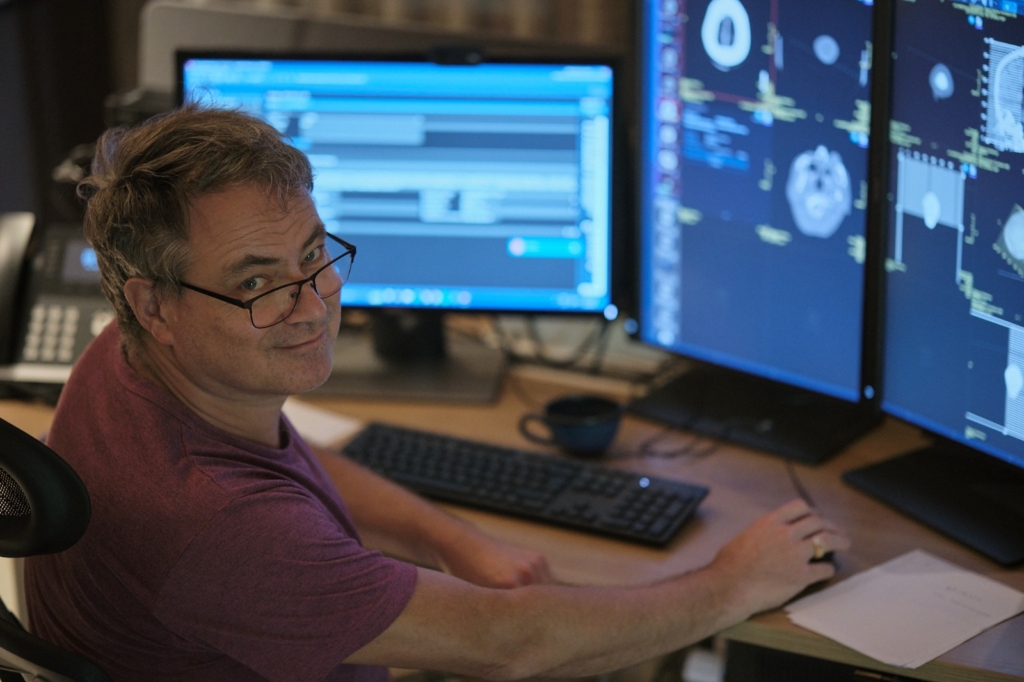Remote radiology, also known as teleradiology, is the practice of interpreting medical images such as X-rays, MRIs, and CT scans from a remote location, away from the healthcare facility where the images are generated. This innovative approach to diagnostic imaging has gained significant traction in recent years, revolutionizing the delivery of healthcare services worldwide. By enabling radiologists to work from home or other remote locations, teleradiology increases the accessibility and efficiency of diagnostic services, reduces patient wait times, and allows for more convenient collaboration between healthcare professionals. Teleconsult, a leading provider of teleradiology services, offers an excellent platform for radiologists seeking a flexible, well-supported, and growth-oriented work environment in this rapidly evolving field.
In this article, we will delve into everything you need to know about remote radiology, a rapidly growing field that is transforming the landscape of diagnostic imaging and healthcare delivery. We will discuss the increasing demand for remote radiology services, the process of becoming a work-from-home radiologist, and the unique benefits and challenges associated with this profession.
The growing demand for remote radiology
Factors contributing to the increased demand
The demand for teleradiology has seen a significant upswing in recent years due to several factors. Increased prevalence of imaging equipment, and an aging population, coupled with a rise in chronic diseases, have led to a higher demand for diagnostic imaging services. Simultaneously, there has been a shortage of radiologists in many countries , leading healthcare providers to seek alternative solutions to meet their radiology reporting needs. Technological advancements in imaging and communication technologies have also made it easier than ever for radiologists to work remotely, further fueling the growth of this field.
Benefits of teleradiology for healthcare providers and patients
Teleradiology offers numerous benefits for both healthcare providers and patients. For providers, it allows access to a broader pool of radiology experts, leading to more accurate and timely diagnosis. It also helps address staffing shortages and enables better workload distribution among radiologists. For patients, remote radiology reduces wait times for imaging results, enabling quicker treatment plans and potentially improved outcomes. Additionally, rural and underserved communities can access specialized radiology services that might not have been otherwise available locally.
Becoming a teleradiologist
Educational and Licensing Requirements
To become a work-from-home radiologist, one must first complete the necessary educational and licensing requirements. This typically involves obtaining a medical degree, followed by a residency in radiology, which can take four to five years. In some cases, a radiologist may choose to pursue additional fellowship training in a specific subspecialty, such as neuroradiology or pediatric radiology. After completing their education, radiologists must also obtain a medical license and board certification in radiology, which may include fulfilling country specific requirements or obtaining additional certifications in their chosen subspecialty.
Necessary skills and personal traits
Apart from the required education and certifications, teleradiologists need a unique set of skills and personal traits to succeed in this field. Strong analytical and problem-solving abilities are essential, as radiologists must accurately interpret complex medical images and provide diagnostic insights. Excellent communication skills are also crucial, as remote radiologists must effectively convey their findings to healthcare teams and patients. Moreover, work-from-home radiologists need to be self-motivated, disciplined, and organized to manage their workload and maintain productivity in a remote work environment.
Adapting to a remote work environment
Transitioning from an on-site to a remote work environment can be challenging for some radiologists. However, there are several strategies that can help facilitate a smooth transition. First, it’s essential to create a dedicated and ergonomically designed workspace to minimize distractions and maintain focus. Second, teleradiologists should establish a consistent work schedule to promote a healthy work-life balance. Lastly, leveraging technology and communication tools can help bridge the gap between remote radiologists and their healthcare teams, ensuring collaboration and coordination in patient care.
Teleconsult: The solution for remote radiologists
Flexibility in working hours and location
Teleconsult enables radiologists to work flexibly, accommodating part-time or full-time schedules, weekdays or weekends, and remote locations worldwide. This flexibility promotes a healthy work-life balance and career exploration.
24/7 Support from HR, Operations, and IT Teams
With 24/7 support from HR, Operations, and IT teams, Teleconsult ensures that radiologists can work efficiently and uninterrupted, enabling them to focus on providing the best patient care.
Personalized Workstation and Advanced System
Teleconsult supplies a customized workstation with necessary tools and resources for efficient medical image interpretation. Their advanced system allows easy access to prior images and reports, facilitating informed decision-making and accurate diagnoses.
Opportunities for Personal and Professional Development
Radiologists with Teleconsult work on diverse cases, promoting continuous learning and growth in their specialties. This commitment to development benefits both radiologists and the quality of diagnostic services provided to patients and healthcare providers.
The future of remote radiology
As we look to the future of remote radiology, technological advancements will play a significant role in its evolution. Innovations such as artificial intelligence (AI), machine learning, and 5G connectivity will enhance the accuracy and efficiency of diagnostic imaging, while expanding the scope and capabilities of teleradiology professionals. The industry is expected to experience substantial growth, offering radiologists diverse opportunities to specialize and advance their careers. Teleconsult, as a leading community in the field, will continue to shape the future of remote radiology by adapting to emerging technologies, fostering professional development, and maintaining its commitment to providing high-quality, flexible elective and emergency teleradiology services to healthcare providers.
Conclusion
In conclusion, remote radiology is an increasingly important aspect of modern healthcare, offering numerous benefits such as enhanced accessibility, reduced wait times, and improved collaboration between professionals. Teleconsult stands out as an exceptional choice for teleradiology professionals, providing unmatched flexibility, comprehensive support, and ample opportunities for personal and professional growth. As the field of remote radiology continues to expand and evolve, we encourage radiologists and healthcare providers to explore the exciting opportunities it presents, and consider how Teleconsult can help them excel in this dynamic and rewarding profession.
